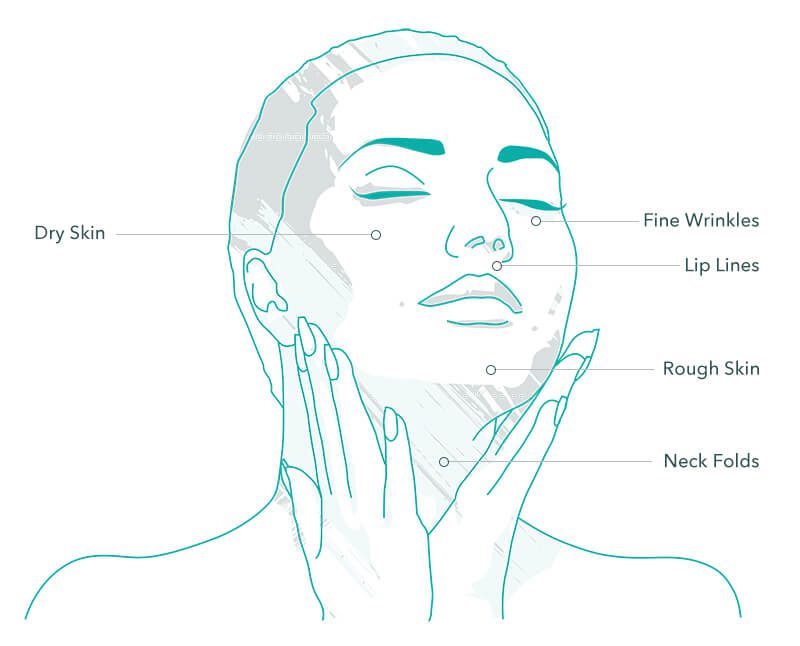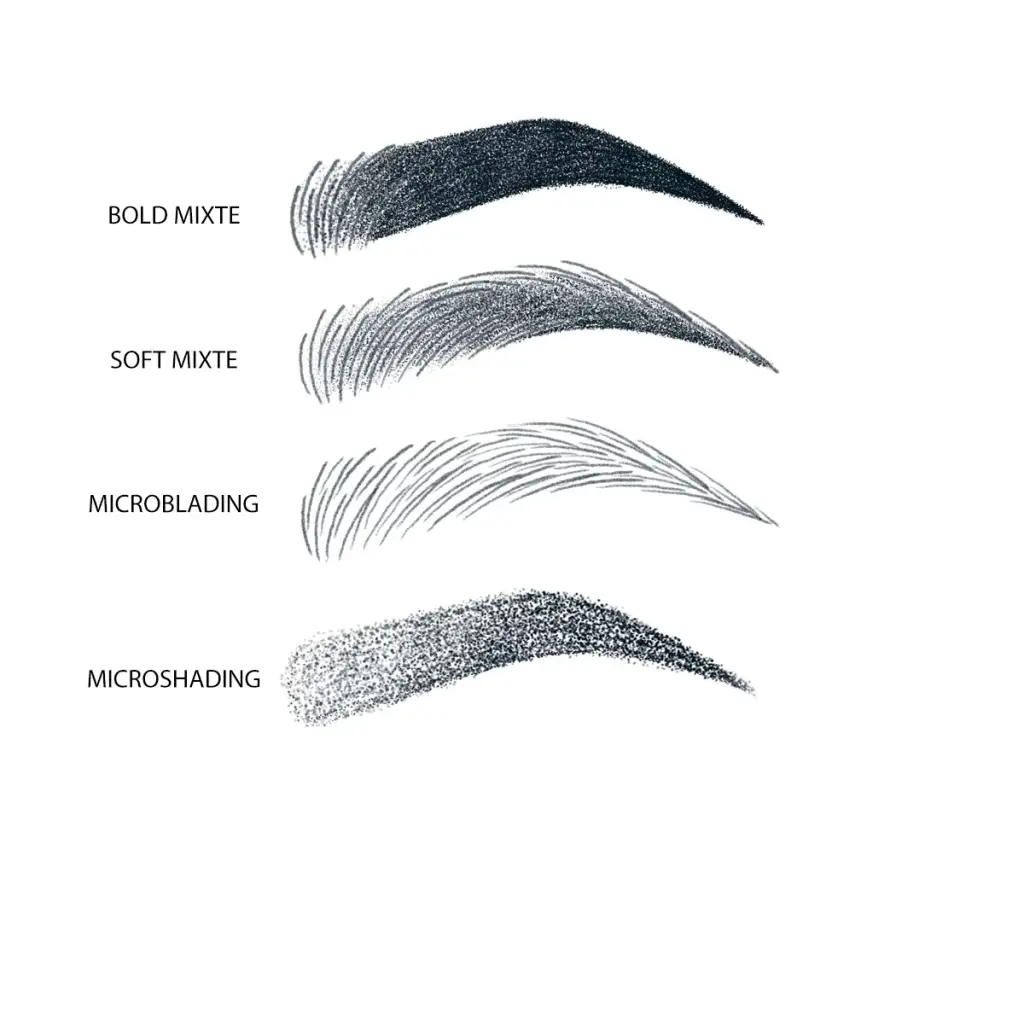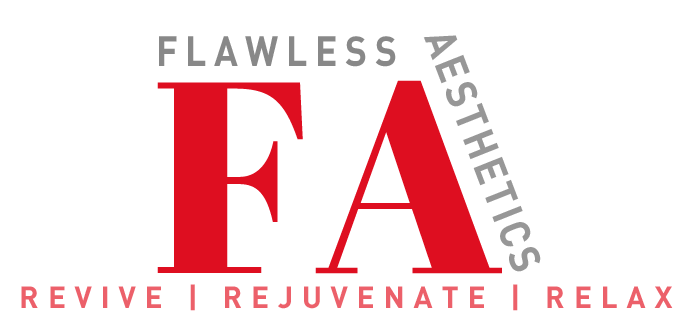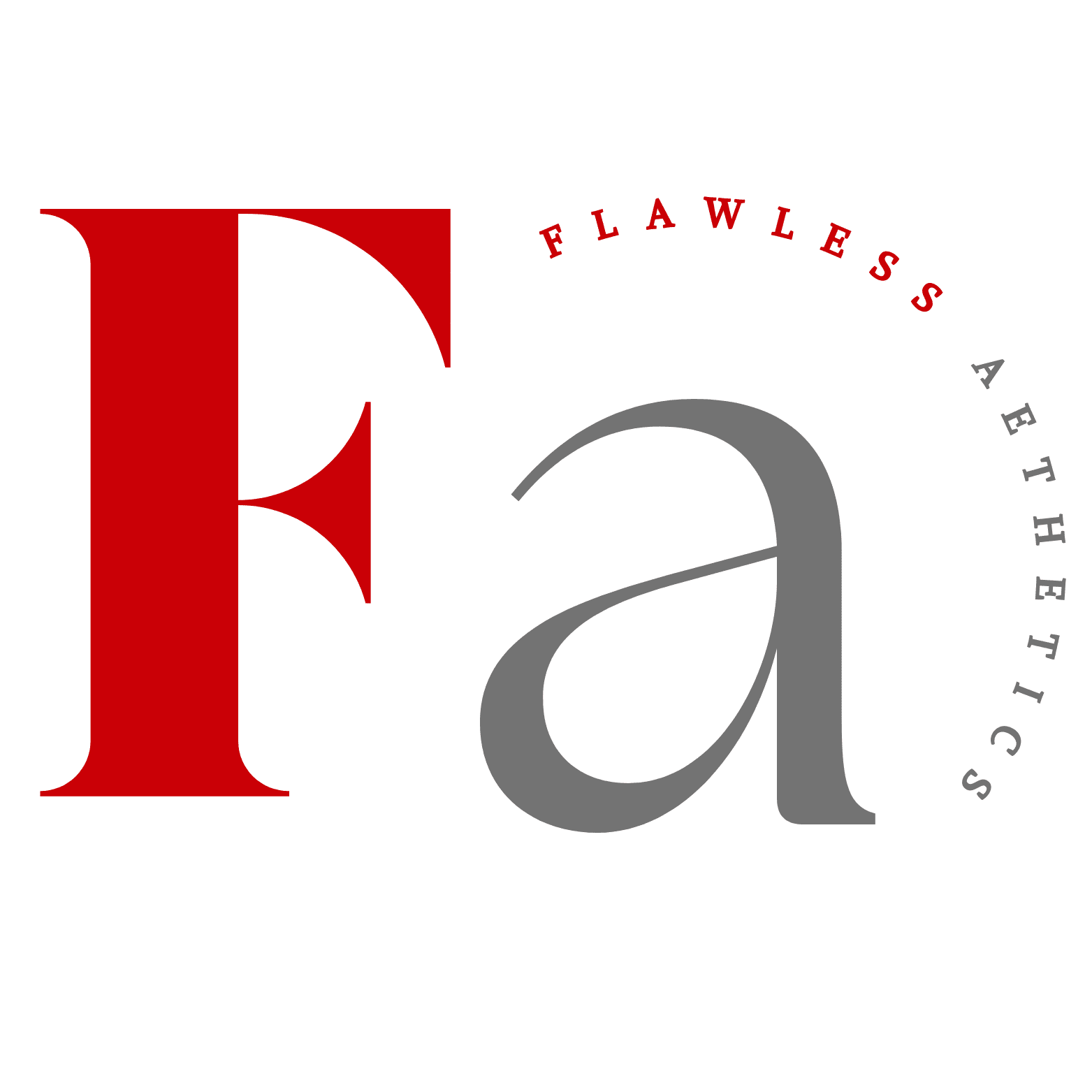
DERMAL FILLERS
What are dermal fillers ?
Dermal fillers are made of a substance called hyaluronic acid (HA) which can be from a natural or synthetic source. HA comes in different thickness and brands; the thickness of the filler will direct where in the face the filler can be used e.g. areas such as cheeks will normally require a thicker filler compared to areas such as lips.
What Is Hyaluronic Acid ?
It’s a Polysaccharide (sugar) found in the tissues of the body and used in aesthetics for its volume enhancing and reconstructive properties.
About 50% of the bodies natural HA is found in the skin and it helps to maintain firmness, hydration and regeneration of the cells. As well as offering a good protection against UVA and UVB rays preventing damage to the skin.
What area dermal fillers used for ?
Dermal fillers are commonly used to augment and to replace the loss of the body’s own HA to create a more youthful appearance, reduce wrinkles and reduce the appearance of bags under eyes or dark circles as when used in tear through.
Are dermal fillers safe ?
In general dermal fillers go through a process of cross-linking, which helps to make the gel stable. This means that the HA is normally combined with a chemical called butanedioldiglycidyl (BDDE) which is the case for Restylane, Belotero and Jevederm. Others may be cross-linked with diepoxyoctane (DEO). In general those chemicals are safe unless a client is known to be allergic to them. These components are important in order to enhance the properties and performance of the filler. Most fillers will also contain a small amount of anaesthetic such a lidocaine, which helps to reduce pain during the procedure. However people can also have allergies to lidocaine. This is the same product a dentist would use before a dental procedure. A few fillers will be lidocaine free and suitable for people with allergies or prone to increased swell with the use of lidocaine. This is the case for Aliaxin.
Another considerations when having filler is the expertise of the practitioner and the use of the product. Such as using the wrong filler in the wrong place or injecting carelessly into arteries or veins, which can cause gangrene or even blindness.
Note: Clients with a history of a cold sore in the previous 6 months may experience a reactivation of the condition, which can be stimulated by the needle piercing the skin. Therefore its best to avoid fillers in areas where a cold sore has been present previously or you may be able to start a course of prophylactic medication immediately after dermal fillers.
Are fillers permanent ?
Most fillers licenced for use in the UK can easily be dissolved using an enzyme called Hyaluronidase. However not all fillers are dissolvable or HA based. Non-HA fillers are often combined with bovine collagen or calcium hydroxylapatite (CaHA) and can not be dissolved with Hyaluronidase, instead requiring surgical removal.
What are the most popular brands of dermal filler ?
Juvederm
Restylane
Teosyal
Belotero
Alleaxin
Radiesse (non-dissolvable)
Is there any down time after treatment ?
Immediately after procedure it is normal to have slight redness and tenderness in the area the filler has been injected, which normally subside within 24 hours.
In the case of lips they can present with swelling for 48 hours. This is due to the needle trauma as well as the lidocaine in the filler which increases the likelihood of swelling.
Occasionally the skin can bruise for a few days, this can be reduced with the use of Arnica cream.
Small lumps which can be at time felt but not visible to the naked eye are normally broken down by the body as the filler settles in the next couple of weeks. However if they persist its advisable to see the practitioner for a review.
None of the above should prevent a client from returning to their normal routine immediately after the procedure.
What is the post treatment advice ?
Clients should not touch the area for at least 4 hours after the procedure as this will increase risk of infection.
Make-up in the area should be avoided for 12 hours as well as exposure to high or very low temperatures (below 0°C).
Saunas, jacuzzi and sunbeds should be avoided for 2 weeks post treatment.
If you are taking high doses of Asprin, High Dose Vitamin C or any other anti-coagulants you are more likely to have bleeding and bruising.
Similarly excessive alcohol consumption should be avoided on the day of treatment as this will increase the likelihood of bruising.

ANTI-WRINKLE TREATMENT
Can I have a consultation first ?
Prior to any aesthetics procedure it is highly advised that all clients have a consultation in order to ascertain if this is the best treatment for their problem, address any possible concerns, access the safety of the procedure and discuss the product to be used, the procedure and post treatment advice.
In the case of Anti-Wrinkle Treatment, it may at times be necessary to issue a prescription. Therefore clients always need a free consultation.
How long does it take to work and how long does the procedure take?
Pre treatment consultation typically takes around 15 minutes.
The actual treatment will take approximately 15 minutes also.
Treatment results start to become evident after 3 to 5 days but this can vary depending on skin type and depth of lines and wrinkles. The peak in results happens at around 28 to 30 days. After this time treatment will fade slowly over a number of months.
What other areas can be treated with Anti-Wrinkle Treatment?
In addition to facial lines and wrinkles, Anti-Wrinkle Treatment are frequently used in the treatment of hyperhidrosis (excessive sweating) of under arms, palm of hands and feet. Its also used for grinding teeth by injecting small amounts in the masseters to relax the muscle and weaken the bite, for the treatment of severe migraine by injecting specific areas of neck shoulders and sides of the head with small amounts as well as many other medical indications.
What happens after treatment ?
After treatment you will need to:
- Any bumps that appear immediately after treatment should subside within a few hours
- Be upright (no bending or lying down) for 4 hours and avoid excessive facial expressions
- Avoid touching and massaging the areas for 2 days (pat dry after washing the area with a soft towel)
- Exercise should be avoided for 2 days
- No alcohol for 12 hours as this will increase bruising
- Avoid makeup in area where needle was used for 12 hours
- Avoid beauty treatments for the next 2 weeks e.g. facials and exfoliation
- For 2 weeks avoid the use of sunbeds, saunas and jacuzzi as well as exposure to strong sunlight. Equally avoid very cold temperatures
- As this is not a permanent treatment it should be repeated approximately 3 times a year with an interval of no less than 12 weeks
- If the lines treated are still prominent see your practitioner after 2 weeks for a review
Why will you take pictures?
Pictures are taken for various reasons. The main one being legal, in cases of a dispute pictures will constitute photographic evidence of the condition of the skin and depth of line pre-treatment. They are also used for assessment at the review consultation to show the degree of improvement of wrinkles and lines. Occasionally clients may be asked if they give consent for the before and after pictures to be used for social media purposes (this is never done without client’s consent or knowledge).

PROFHILO
What is Profhilo?
Profhilo is a revolutionary and exclusive approach to anti-aging and skin tightening with amazing visible results in just 2 visits. Treatments are carried out 4 weeks apart requiring a minimum of 2 doses of Profhilo, occasionally a third dose may be needed for very lax skin.
What is it made of?
Profhilo has a specific and patented technology of hyaluronic acid (HA) chains combining different molecular weights, which work in different depths of the skin and deliver a concentration of 64mg of HA in a 2ml syringe.
Why use Profhilo?
Profhilo is injected in the deep dermis and is indicated for skin laxity with amazing results especially on the lower face including smoker’s lines which are areas challenging to treat with other products. Due to its bio remodelling properties it tightens the skin, improves turgor and nourishes the dermal cells with a prolonged duration, while stimulating endogenous HA production by the skin.
Is it safe?
Profhilo is produced by IBSA pharmaceutics based in Italy. The products has a vast number of research behind it and is an innovative treatment in the field of skin care.
Attention to detail in the manufacturing and the packaging of the product has enabled a high level of quality and safety of the product. IBSA is also a paramount company in training specialist practitioners in the use of Profhilo.
The knowledge, ongoing scientific research, technological development and state of the art production processes makes IBSA one of the leaders in HA production.

SEMI-PERMANENT MAKE-UP
How long does semi-permanent make up last?
Semi permanent make up lasts anywhere between 18 months to 3 years, it really depends on several factors including sun exposure, lifestyle and most of all your skin. No two people are the same.
Is semi- permanent makeup permanent?
Semi-Permanent makeup is a cosmetic technique which employs tattoos (permanent pigmentation of the dermis) as a means of producing designs that resemble makeup, such as eyeliner, eyebrow’s & lip enhancement. How Semi Permanent make up differs from normal tattooing is a lot to do with the pigments used, pigment particles used in Semi-Permanent make up are much smaller therefore allowing them to be broken down by our bodies over time.
How Long is the healing process?
For all procedures healing is roughly 7 days, however true results will not be visible until 4 weeks after treatment this is due to the way pigments are deposited into the skin and require time to resurface after healing which takes around 3/4 weeks.
What if I cannot make my appointment?
Deposits are non-refundable however, they can be transferred to another appointment. A minimum of 48 hours is required to reschedule an appointment to allow me time to try and fill the slot. Appointments can be rescheduled once.
Can I wear make up?
Not for 24 hours near the treated area, this is to avoid any bacteria coming into contact with the area and causing an infection. After 24 hours you can wear makeup around the area but not directly on. rescheduled once.
Does it hurt?
Everyone is different, most people feel little to no discomfort many have actually fallen asleep or said they find it relaxing!. Numbing cream is applied prior to treatment and throughout to keep discomfort to a minimum.
Is it safe?
Most defiantly, all products used are disposable and changed for every client (other than the machine which is wrapped in plastic and changed each time). All needles come individually packaged and 100% sterile.


